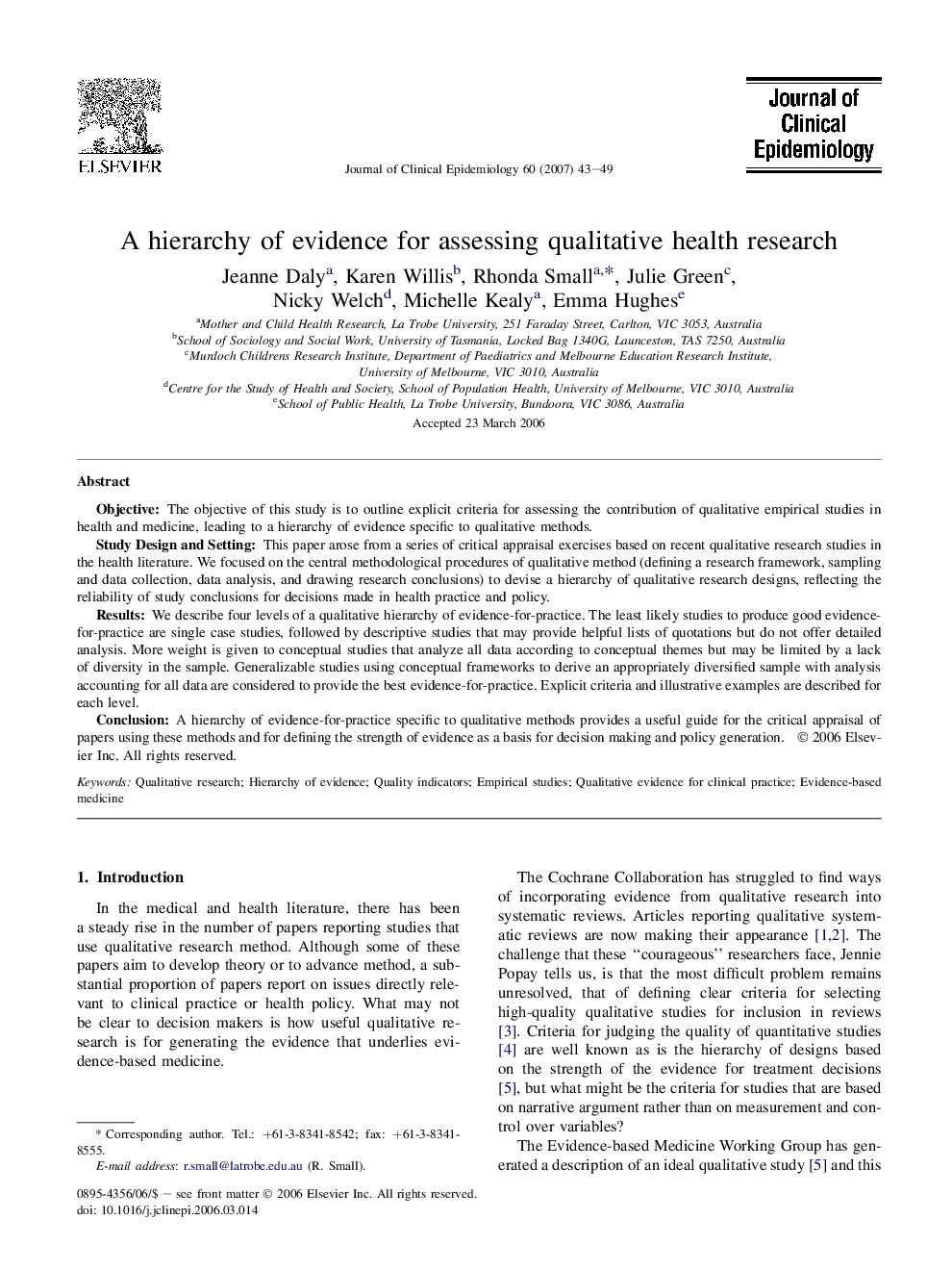| Article ID | Journal | Published Year | Pages | File Type |
|---|---|---|---|---|
| 1083544 | Journal of Clinical Epidemiology | 2007 | 7 Pages |
ObjectiveThe objective of this study is to outline explicit criteria for assessing the contribution of qualitative empirical studies in health and medicine, leading to a hierarchy of evidence specific to qualitative methods.Study Design and SettingThis paper arose from a series of critical appraisal exercises based on recent qualitative research studies in the health literature. We focused on the central methodological procedures of qualitative method (defining a research framework, sampling and data collection, data analysis, and drawing research conclusions) to devise a hierarchy of qualitative research designs, reflecting the reliability of study conclusions for decisions made in health practice and policy.ResultsWe describe four levels of a qualitative hierarchy of evidence-for-practice. The least likely studies to produce good evidence-for-practice are single case studies, followed by descriptive studies that may provide helpful lists of quotations but do not offer detailed analysis. More weight is given to conceptual studies that analyze all data according to conceptual themes but may be limited by a lack of diversity in the sample. Generalizable studies using conceptual frameworks to derive an appropriately diversified sample with analysis accounting for all data are considered to provide the best evidence-for-practice. Explicit criteria and illustrative examples are described for each level.ConclusionA hierarchy of evidence-for-practice specific to qualitative methods provides a useful guide for the critical appraisal of papers using these methods and for defining the strength of evidence as a basis for decision making and policy generation.
